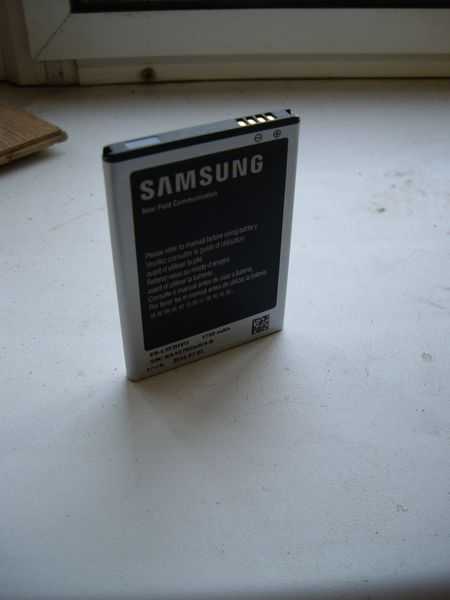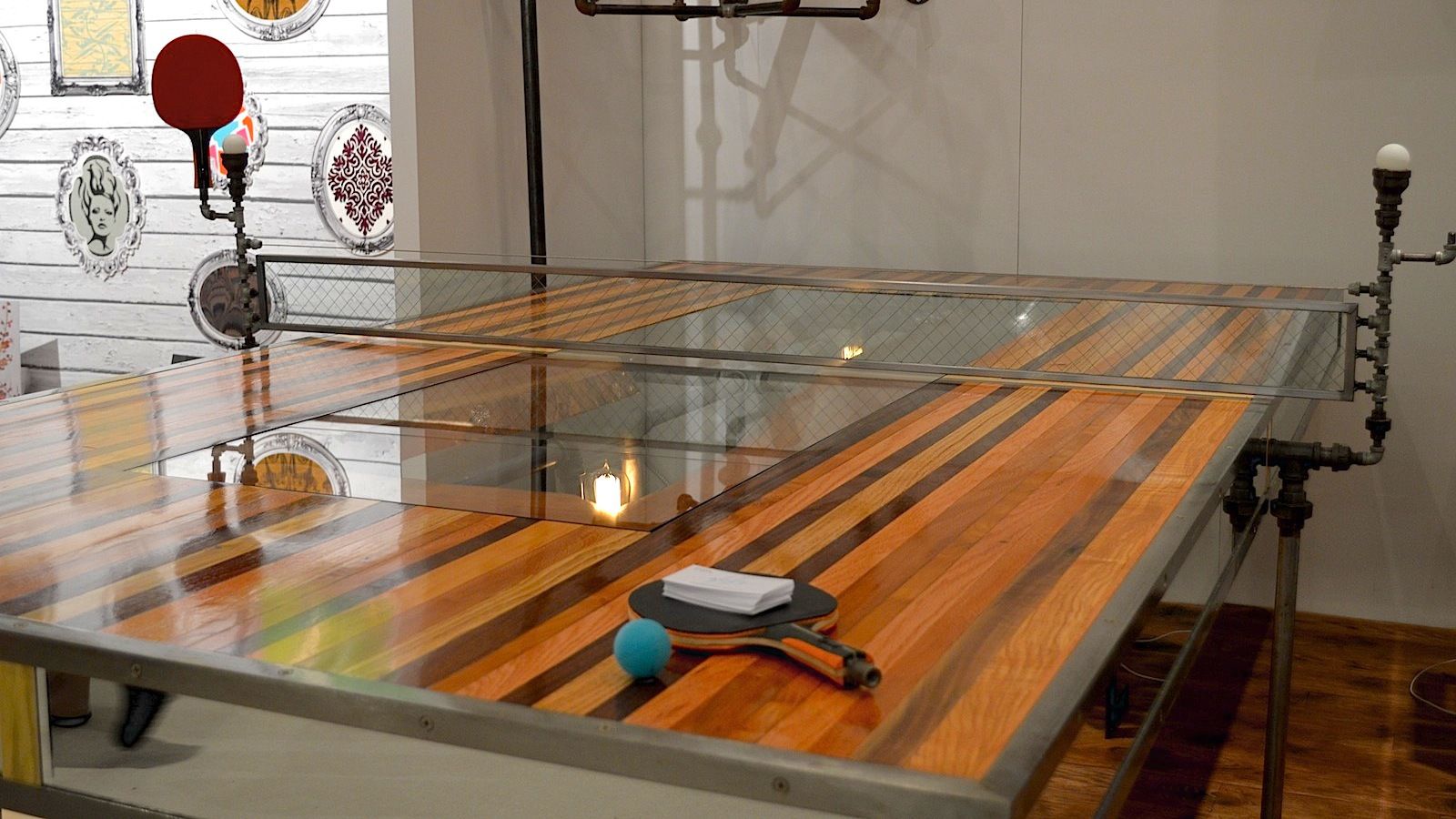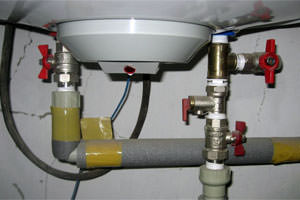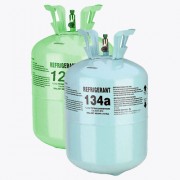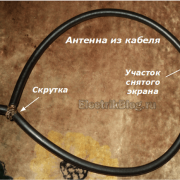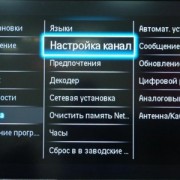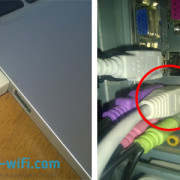Support ArticlesIs Plex Media Server on a NAS Right for Me
Содержание:
How Do I Know Connections Are Secure
When a secure connection to a particular Plex Media Server is available, you’ll generally see a green “lock” icon next to the server name to let you know that it’s secure.
Plex Web App
When you go visit plex.tv/web in a browser, the app will automatically redirect as appropriate for you, based on whether the servers associated with your account (your own and shared with you) support secure connections:
- If your account is associated only with secure servers, you’ll connect securely to https://app.plex.tv/desktop
- If any of your associated servers don’t support secure connections, you’ll connect to http://app.plex.tv/desktop over regular HTTP
So, if you have all secure servers, you’ll get that awesome green lock in the browser!
Tip!: You can always manually go to https://app.plex.tv/desktop to force using a secure connection to Plex Web App. Of course, if your servers don’t support secure connections, then they won’t be accessible.
Connecting via HTTPS
When you connect to Plex Web App via HTTPS (e.g. https://app.plex.tv/desktop), you can be sure that all the connections are secure.
- For servers that support secure connections, they’ll be listed and have a green lock next to their name.
- If you have a server that doesn’t support secure connections, then you’ll see it listed with a note that it can’t be reached securely.
- In such a case, if you choose to follow the Click here link, then the browser will reload using a regular HTTP connection, but your communication with those particular servers will not be secure.
Connecting via HTTP
If you connect to Plex Web App via regular HTTP (e.g. http://app.plex.tv/desktop), then some communication may not be secure.
- For servers that support secure connections, they’ll be listed with a green lock next to their name and communication with that particular server will be secure.
- Communication to servers without the green lock next to their name will not be secure.
- When Plex Web App is loaded via HTTP, secure connections will be first attempted, but if they’re not available or fail, then the app will fall back to regular HTTP connections. The presence/absence of the green lock next to the server name will tell you the current status.
Tip!: If for some reason you wish to force a regular HTTP connection to Plex Web App, you can load the app via http://app.plex.tv/desktop?secure=0.
Using the Bundled Plex Web App
By default, the local, bundled version of Plex Web App will load over HTTP. Just like above, if individual servers support secure connections and are listed with a green lock, then communication with those particular severs will be secure.
You can, of course, attempt to force an HTTPS connection simply by using in the URL. If you do so, since the server’s certificate isn’t for “localhost” (for example), your browser will almost certainly warn you that there isn’t a valid certificate for that connection.
You can make an exception there if you wish, but you won’t see the green lock in the address bar as you would if using the standard hosted web app securely. If you wish to see the green lock in the address bar, you’ll want to connect as described earlier.
What About Via IP or My Own Domain?
Some users may be used to accessing their server’s bundled Plex Web App through something like http://public.wan.ip.address:32400/web or http://mycustomredirecteddomain.com:32400/web when away from home. If you just switch to using in the URL, you’re going to see the same sort of behavior as described above for ‘Using the Bundled Plex Web App”. The certificate that’s been issued to your server isn’t signed for your IP address or your custom domain, so it won’t report itself as valid for those.
Instead, simply launch the app through plex.tv/web as described earlier so that you can take advantage of the secure connections as intended.
Basic Prerequisites
There are two very important things you need to first determine if you’re interested in using a NAS with Plex:
- Do you plan to run your Plex Media Server on the NAS or only use it for storage?
- Will you need to transcode media for any of your Plex apps?
Let’s expand on those questions and see what they really mean.
Do you plan to run your Plex Media Server on the NAS or only use it for storage?
If you just want to store your media on your NAS (but run Plex Media Server elsewhere), then there isn’t really anything specific to Plex that needs to influence which NAS you buy. Find a brand you like that can hold the amount of storage you want and you’re done.
If you want to run your server on the NAS itself, keep reading.
Will you need to transcode media for any of your Plex Apps?
Running your server on the NAS itself means you’ll need to choose a NAS that meets a few basic criteria. It will need to:
- Be a brand and model with an x86 CPU and have a CPU fast enough to transcode the type of media you want to watch, on the types of clients you want to watch it on, or
- Be a supported ARM model
Note: ARM models generally do not support video transcoding at all.
For ARM models, the format of your media will need to 100% match the formats your clients can play. Without the transcoder, you may also run into issues when viewing your media remotely as you will only be able to stream the media at full bitrate, needing an internet connection with a high bandwidth.
Related Page:
Even Compatible Media May Need Transcoding
There are also situations where transcoding is required even if your media is otherwise compatible with your playback device. This can be the case when:
- Using Subtitles: For many Plex apps, subtitles have to be “burned in” to the video stream by the server. That requires transcoding to accomplish.
- Remote Access: When your Server is accessed from outside your home, it may not be possible to stream the content at the full quality. In these cases, the server has to transcode the content to a lower quality in order to be able to stream without buffering.
Related Page:
Create a DVR
To start the process, click the DVR Setup button, which will open the wizard to guide you through the setup of a DVR.
- When you first open the wizard, your server will automatically search the network to try and find any compatible devices. Any devices found will be listed.
- If your DVR device isn’t automatically detected, you can click the link to allow you to manually specify the device’s location.
- Select the DVR and you will see any channels that have been found. You can also choose to Scan Channels manually here. In addition, you can choose whether the input is via Antenna or Cable as well as set your country.
- Once you have the channels scanned and you continue on, you will need to specify your location so that an Electronic Program Guide (EPG) can be found for you. Select your language and input your postal code, then continue.
- We’ll quickly search and find the best program guide to match your channels and location.
- Once the appropriate program guide is located, you will see a mapping of the channels from your device alongside the channels from the program guide. You can uncheck a channel to not include it for your DVR as well as adjust which channel from the program guide maps to which channel from your DVR.
- Once you save, your server will begin downloading data for your Program Guide. You can wait until it completes here or you can close the wizard and continue using your server as normal.
Transcoding and Media
Transcoding is the process of converting media from one format to another. For many other applications, when trying to play a media file that is in a format not supported by a given playback device, it will simply stop and say it cannot play it. However, with Plex it will still play, and that’s due to the transcoder.
The Plex Media Server will analyze the media when it’s added to your library and detect the format and details of the media such as encoding, bitrate, etc. When playing media on any device with Plex, the following process happens:
- Before a Plex app tries to play content, it requests the media information from the Server
- Using the media information together with the current settings (such as stream quality, Direct Play, and Direct Stream settings), the Plex app determines whether it can play the media directly (Direct Play) or whether it will need help from the Server.
- If the Plex app needs help, then the Server will automatically transcode the content as appropriate to a format that the Plex app can play.
- The media will then play in the Plex app, and continue playing as long as the CPU doing the transcoding is fast enough to transcode the media at a rate that is equal to or faster than it is being watched.
Related Page:
Media Formats
Your content is much more than just a file extension. Your media has some important properties:
- File container (mkv, mp4, avi, etc.)
- Video codec (H.264, divx, xvid, etc.)
- Audio codec (DTS, AC-3, AAC, MP3, etc.)
- Subtitle format (SRT, VOBSUB, PGS, etc.)
- And more
The combination of these things make up the “format” of your media and will determine how it can be played back. In order to get an idea about what sort of media you have, you’ll need to be able to examine this information.
The “MediaInfo” application—particularly when used in the “Tree” or “Text” view to see details—can provide a wealth of information about your content.
Related Page: MediaInfo DownloadRelated Page:
Is Your Content Supported?
If you wish to have your content play directly without transcoding, then you need to be sure that the device and Plex app you wish to use support your content. If you’ll be using more than one Plex app, be sure that they all support your content.
Plex Media Player
The Plex media Player desktop application will typically always play content directly if you’re using it with a local Plex Media Server. This app can play nearly any kind of content:
- mp4, mkv, avi, and other containers
- H.264, DivX, XviD, MPEG-2, and other video codecs
- MP3, AAC, AC-3, DTS, and other audio codecs
- SRT, ASS, VOBSUB, PGS, and other subtitle formats
Note that if you’re trying to use Plex Media Player with a remote Server, you may still require transcoding if your network connection is not fast enough to support streaming the file in full quality.
Other Plex Apps
Capabilities of other Plex apps can vary greatly. They will largely depend on the operating system running the app (Android, iOS, Roku, Windows Phone, etc.) as well as the capabilities of the device hardware itself. Look at the specifications listed for the device on the device manufacturer’s website.
Generally speaking, Plex apps use the default playback engine on the device, so what’s listed on the manufacturer’s site should correspond well with what can be Direct Played.
While there simply does not exist any kind of “universal format” that is compatible everywhere, the following is about as close as you’ll get:
- Container: MP4
- Video Codec: H.264 (level 4.0)
- Audio Codec: AAC (2.0 audio)
- Total Bitrate: Less than 8Mbps (8000 Kbps)
Whats the Deal With Secure Connections
Why Is It Important?
When browsing the internet or making other connections these days, everyone wants to make sure that the communication taking place is secure and encrypted. Plex has teamed up with DigiCert to provide our users with high quality “SSL” secure certificates for your media servers, at no cost to you. There’s no need to set up VPNs and no need to create and install your own certs. You can safely and securely connect to your media no matter where you are.
After all, everyone loves to see beautiful green locks, right?
Our blog post announcing the release of secure communications spoke about some of the details:
The end result is that you get that beautiful green lock and a secure connection!
Tip!: While most users are familiar with “SSL”, the secure certificates issued to your Plex Media Server actually use TLS, an even higher level of security.
If you’re interested in some of the more technical details, Filippo Valsorda did an excellent writeup.
Related Page: Filippo Valsorda: How Plex is doing HTTPS for all its users
Are All the Communications Secured?
When you’re using a Plex app that supports secure connections (see below) to connect with a secure Plex Media Server, the requests to and communication with that Server are secure. If you stream media from the Server, that’s also secured. There are a few, very specific circumstances in which communication won’t be secure:
- Flinging or casting content using our Casting, Flinging, & Remote Control protocol will not always be secure.
- When making use of a “Manual Connection” that you’ve specifically added in particular Plex apps (e.g. Android or Plex Media Player), the communication won’t be secure.
- Internal, local requests from the System and Framework components to the rest of the Plex Media Server are over regular HTTP. These requests are only on the local machine itself.
How to Enable Secure Connections
Enabling the ability to connect securely with your Plex Media Server is actually really easy. In fact, in a default installation, there isn’t even anything special you need to do, since things will already be set up for you.
- Secure connections require Plex Media Server version 0.9.12.3 or newer. So, make sure you’re running a current version of the server.
- Sign in to your Plex account in the server.
- Under Settings > Server > Network in the Plex Web App, make sure that the Secure Connections preference is not disabled (we recommend leaving it at the default setting of ).
Related Page: Plex Downloads pageRelated Page: Related Page:
Guides and How tos
Plex Media Server video tutorials
| 7 reviews, Showing 1 to 5 reviews |
Post review
|
Report!
No comments. Rating it only.
on
Feb 25, 2019 Version: 1.14.1.xxxx
OS: Windows 8 64-bit Ease of use: 6/10
Functionality: 3/10
Value for money: 1/10
Overall: 3/10
Report!
I have been using Plex on a Windows Home Server 2011 with over 20Tb. of storage for a couple of years and I absolutely LOVE it. I have ripped a bunch of movies and TV shows and put on it (my 20TB is almost half full). It works flawlessly with my Iphone,Ipad, and cable boxes (which are Tivo. When I buy a new movie I rip it and put it on there.
on
Feb 1, 2018 Version: 1.11.1.4753 PlexPass
OS: Other Ease of use: 8/10
Functionality: 9/10
Value for money: 9/10
Overall: 9/10
Report!
It amazes me how people bash Plex. I assure anyone that came across this link that negative reviews of Plex are due to a lack of patience. Configuring your Plex server does take some time and patience but it is great once you’re done. A friend of mine recommended it after I placed my TBs of media on a Synology NAS and using Synology’s Media server that is actually pretty good.
The ease of Plex to share outside of your network cannot be topped. Plex has allowed me to share my videos with around 10 friends/family around the country with an excellent simple user interface on almost any device that you can think of. The devices that connect to my servers are Roku (sticks/boxes), Androids (phones/tablets), Google Nexus, Amazing Fires(stick/tablets), iPhones/iPads/AppleTV, PS4, 360 and a good web interface (and AWESOME Chrome app. Plex works great with Chromecast, including subtitles.
Why would you use an app that still is still Java-based? I already hate that Synology will not update their interface to stop requiring Java. Some people have much simpler needs and like Kodi, Emby, MediaPortal, Infuse and apparently this Serviio but I recommend giving Plex another try (especially if you share your content).
Personally I have learned so much about codecs, containers , subtitles, etc.
on
May 29, 2016 Version: 2.6.1
OS: Other Ease of use: 8/10
Functionality: 8/10
Value for money: 9/10
Overall: 9/10
Report!
Plex is fine except for the bug that keeps ffmpeg running even when no transcoding is required and it hogs your CPU. Serviio is much better if you put more value on speed and simplicity and don’t need a lot of metadata.
on
Jan 12, 2016 Version: 3.0.0.149
OS: Windows 10 64-bit Ease of use: 7/10
Functionality: 7/10
Value for money: 10/10
Overall: 8/10
Report!
This tool allows you to stream your movies, home movies, pictures, music, and even live tv providing you have an HD Homerun.
It streams to computers, android, apple, roku, playstation and Xbox.
Quality of streaming is limited only by the original resolution of the source and bandwidth on both sides.
A little tedious to set up but once done, it is a fantastic server system for your media.
on
Oct 8, 2015 Version: 0.9.12.13
OS: Windows 8 64-bit Ease of use: 9/10
Functionality: 10/10
Value for money: 10/10
Overall: 10/10
| 7 reviews, Showing 1 to 5 reviews |
Post review
|
CPUs and Transcoding
By now, you should know whether or not you’ll need to be able to transcode your media. If you will need transcoding support and you plan to run your Plex Media Server on the NAS device, you’ll want to choose a NAS that both supports transcoding and is powerful enough for your needs.
Remember, transcoding is not supported for nearly all ARM models.
CPU requirements for transcoding aren’t set in stone. There is no single answer for what is required, because that will depend on the particular media in question, the Plex app being used, etc.
Basic Requirements
When transcoding content, generally the higher the resolution and the higher the bitrate, the more powerful CPU you’ll need. There are some broad guidelines you can use to get an idea, though.
Related Page:
CPUs in NAS
The CPUs used in most home or small-business NAS are not particularly powerful. Only some NAS will be capable of good performance when transcoding 720p type content. Very few NAS will be able to do so for 1080p type content.
Related Page: Related Page:
The NAS Compatibility List should help you figure out which processor a particular NAS model has. You can also try doing a search for “NAS model xyz CPU type” on Google or similar (putting in the NAS model in which you’re interested, of course) to determine what sort of CPU is used in a particular NAS device.
x86 vs ARM Processors
There are a couple of broad architectures of processors that you might find in your NAS:
- x86: This type of architecture is normally found in desktop or laptop computers. It’s designed to be fast and run almost any kind of computer software. When included in NAS, though, the x86 processor versions used are usually slower and less powerful than a typical desktop computer.
- ARM: This kind of processor is more commonly found in a mobile phone or tablet. It’s inexpensive and designed to be very energy-efficient and is typically not as powerful as a similar x86 processor.
Only x86-based processors are really capable of the sort of transcoding that Plex Media Server does. Even many x86-based systems may not be powerful enough to transcode content fast enough to be useful.
Last modified on: February 28, 2019
Manage the DVR
Once you’ve added a DVR, you can adjust several things.
You can:
- Manually Refresh Program Guide (your EPG will also automatically refresh, so you normally do not need to use this)
- Access DVR Settings to adjust global settings related to the DVR
- Access Device Settings (the gear icon next to the device name) to adjust settings related to the physical tuner device
- Manage Channels to adjust the channels related to the DVR tuner
DVR Settings
It’s possible to adjust global settings associated with the DVR entry itself.
Minutes Before Start
Start the recording early. Specify the default number of minutes before the scheduled airing time to start each recording.
Minutes After End
Keep recording after the scheduled end time. Specify the default number of minutes after the scheduled airing time to end each recording.
Enhanced Program Guide
If this option is enabled, then your server will try to download richer program guide data for some shows and movies, when it’s available. Enabling this will make refreshing the program guide (either manually or when your server does so automatically) slower.
Postprocessing Script
If you have set up a script to perform postprocessing on recordings (prior to them being added to the library), specify the full path to the program here.
Tip!: Most users won’t have any postprocessing script.
Remove Commercials
You can optionally tell your server to attempt to detect and remove commercials from recordings automatically. Detection is not always perfect.
Related Page:
Device Settings
You can open up Device Settings related to the DVR that you set up. Available options can vary depending on the particular DVR you have.
HDHomeRun EXTEND
The HDHomeRun EXTEND model has its own built-in transcoder, so it is capable of converting the content itself.
Transcoder Quality
You can adjust the quality used when the EXTEND transcodes the content. If enabled, it will transcode the video stream to . Available options:
- Original format
- Highest quality
- High quality (30 fps limit)
- Medium quality (540p)
- Medium quality (480p)
- Low quality (360p)
- Low quality (240p)
Tip!: means the device will not transcode to H.264 at all and instead use the native stream (usually MPEG2). We recommend using the setting if you wish to make use of the built-in transcoding.
Other HDHomeRun Devices
Other HDHomeRun models do not have a built-in transcoder.
Convert Video While Recording
This is an experimental feature with the following options:
- Off – Video and audio streams will be left as-is and the content placed in a standard TS container.
- Transcode – Transcode the video stream to and place it in a standard TS container. This helps save space and make the content more compatible with player devices, but it requires a fast CPU. (Audio is always retained as-is.)
Manage Channels
After you’ve added a DVR you can go back and manage your channels, if desired.
You can re-scan channels, adjust the channel mapping, or uncheck channels that you no longer wish to show up in your Program Guide.
Last modified on: June 20, 2019
Why Isnt It Working
In rare cases, your apps still may not be able to connect securely with your Plex Media Server. In nearly all cases, this will be caused by issues with your router/modem or network. It also isn’t currently possible to connect with a “mobile server” from one of your mobile apps securely.
Mobile Servers
If you enable the “mobile server” in a mobile app such as Android, iOS, Windows 8.1, or Windows Phone, it isn’t currently possible to connect with those securely. This means that connections to those mobile servers will be insecure.
If you wish to allow mobile servers to be included in the list for the Plex Web App, you can force accessing the app itself insecurely as noted earlier. To do so, access the web app using the http://app.plex.tv/desktop?secure=0 URL.
DNS Rebinding
Some routers or modems have a feature known as “DNS rebinding protection”, some implementations of which can prevent an app from being able to connect to a Plex Media Server securely on the local network. For most users, this won’t be an issue, but some users of higher-end routers (or those provided by some ISPs) may run into problems.
Similarly, some DNS providers (including some ISPs) may have this feature.
DNS rebinding protection is meant as a security feature, to protect insecurely-designed devices on the local network against attacks. It provides no benefit for devices that are designed and configured correctly.
ISP Settings
In some cases, your ISP itself may provide rebinding protection when using their DNS services. In this case, you can switch to using a different DNS service. Depending on your personal setup, you may need to update either your router’s configuration, the configuration on your computer(s), or both.
There are many free and easy-to-use alternative DNS services. Some of the more popular:
- https://1.1.1.1/ (a “privacy-first” DNS responder)
- Google Public DNS
- OpenDNS
- Quad9
Modem/Router Settings
We can’t provide instructions for all possible configurations, but the most common scenarios for this issue include using “dnsmasq” (often on DD-WRT based routers), and using pfSense. You may need to consult your router’s documentation for more details about DNS rebinding protection.
dnsmasq
To allow secure connections to work correctly on the local network if you are using “dnsmasq” with DNS rebinding protection enabled, you will need to add the following line to your configuration file (the “advanced settings” box in DD-WRT):
Related Page: Manpage for Dnsmasq
pfSense DNS Resolver
Similarly, if you are using pfSense’s internal DNS resolver service, you’ll want to adjust that configuration. In the pfSense web UI, go to Services > DNS Resolver, click Display Custom Options, and enter the following the the text box:
Related Page: pfSense: DNS Rebinding Protections
Remote Access Workaround
In some cases, it may be possible to work around DNS rebinding protection by enabling Remote Access for your server. When enabled, this allows connections to be made via your public/WAN address. In most cases, your router will automatically keep such connections within your LAN, though this isn’t universal across all routers.
Warning: When working around DNS rebinding protection this way, your apps and Plex Media Server will typically treat the connections as being from a “Remote” source. This can affect which streaming qualities are used, as well as trigger Remote-applicable .
Related Page: Related Page:
Last modified on: June 5, 2019





